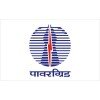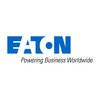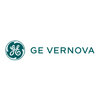
i
Hitachi Energy
Filter interviews by
Hitachi Energy Test Engineer Interview Questions and Answers
Hitachi Energy Test Engineer Interview Experiences
1 interview found
I applied via Approached by Company and was interviewed in May 2022. There were 2 interview rounds.

(2 Questions)
- Q1. About the communication protocols
- Q2. About the 61850 protocols
Interview Preparation Tips
Test Engineer Jobs at Hitachi Energy
Top trending discussions






Interview questions from similar companies

Interview Questionnaire
1 Question
- Q1. Normal question about personality and job related
Interview Preparation Tips
Experience: Interview was going smoothly & all questions was related my job so it's was easy for me.
Tips: Good knowledge about of wind turbine
Duration: 2 hours
Total Questions: 25
Round: HR Interview
Experience: Interview was completed so easy
Tips: Required nice personality and confidence is must required

I applied via Company Website and was interviewed before Feb 2021. There were 2 interview rounds.

(2 Questions)
- Q1. What is sld and how to create
- Ans.
SLD stands for System Level Design. It is a process of designing a system at a high level of abstraction.
SLD is the first step in the design process
It involves defining the system's requirements and architecture
SLD helps in identifying the major components of the system and their interactions
Creating an SLD involves creating diagrams and flowcharts to represent the system
- Q2. What is the basic parameters of layout
- Ans.
Layout parameters include size, spacing, alignment, and orientation.
Size refers to the dimensions of the layout
Spacing refers to the distance between elements in the layout
Alignment refers to the positioning of elements relative to each other
Orientation refers to the direction of the layout, such as horizontal or vertical
Interview Preparation Tips

I applied via Referral and was interviewed before Mar 2020. There were 3 interview rounds.
Interview Questionnaire
2 Questions
- Q1. Method Overloading and Method Overriding
- Q2. Excel Presentation
Interview Preparation Tips

Software Engineer Interview Questions & Answers
Power Grid Corporation of Indiaposted on 27 Mar 2025
I appeared for an interview in Feb 2025, where I was asked the following questions.
- Q1. What skills do you specialize in?
- Ans.
I specialize in full-stack development, focusing on JavaScript frameworks, cloud computing, and agile methodologies.
Proficient in JavaScript frameworks like React and Angular for building dynamic user interfaces.
Experienced in backend development using Node.js and Express, enabling seamless API integration.
Skilled in cloud services such as AWS and Azure, optimizing application deployment and scalability.
Familiar with a...
- Q2. How many years of experience do you have?
- Ans.
I have over 5 years of experience in software engineering, specializing in full-stack development and agile methodologies.
Worked on multiple projects using JavaScript frameworks like React and Node.js.
Led a team of 4 developers in creating a scalable e-commerce platform.
Implemented CI/CD pipelines to streamline deployment processes.
Contributed to open-source projects, enhancing my collaborative skills.
- Q3. What additional qualifications do you possess?
- Q4. In what areas do you have knowledge or expertise?
- Ans.
I have expertise in software development, algorithms, data structures, and web technologies, with a focus on scalable applications.
Proficient in programming languages like Python, Java, and JavaScript.
Experience with web frameworks such as React for front-end and Node.js for back-end development.
Strong understanding of algorithms and data structures, demonstrated through competitive programming.
Familiar with cloud serv...
Interview Preparation Tips

(3 Questions)
- Q1. Just half hour interview Oops concept
- Q2. . Net and angular basics
- Q3. Project in details
(3 Questions)
- Q1. What if team is not supporting you
- Q2. Manager is not agree
- Q3. 5 year your goals


(1 Question)
- Q1. All technical things related wind turbine.
Interview Preparation Tips

I applied via Referral and was interviewed before Nov 2023. There were 2 interview rounds.
(2 Questions)
- Q1. About my academic
- Q2. About salary & family background
(2 Questions)
- Q1. About college project
- Q2. Some discussion on college studies
Interview Preparation Tips

Senior Engineer Interview Questions & Answers
Suzlon Groupposted on 25 Dec 2024
I applied via Walk-in and was interviewed before Dec 2023. There was 1 interview round.
(22 Questions)
- Q1. Can you provide an introduction about yourself?
- Ans.
Experienced Senior Engineer with a strong background in software development and project management.
Over 10 years of experience in designing and implementing complex software solutions
Proficient in multiple programming languages such as Java, Python, and C++
Led cross-functional teams to successfully deliver projects on time and within budget
Strong problem-solving skills and ability to adapt to new technologies quickly
- Q2. Can you provide details about your work experience?
- Ans.
I have over 10 years of experience in designing and implementing complex engineering solutions.
Designed and implemented various engineering solutions for different projects
Led a team of engineers to successfully complete a major project ahead of schedule
Collaborated with cross-functional teams to ensure project success
Utilized advanced engineering tools and techniques to optimize project outcomes
- Q3. What do you know about Doubly Fed Induction Generators?
- Ans.
Doubly Fed Induction Generators (DFIGs) are commonly used in wind turbines to allow variable speed operation and improve efficiency.
DFIGs have two sets of windings - one on the stator and one on the rotor
The rotor windings are fed with variable frequency AC power through slip rings and brushes
DFIGs allow for control of both active and reactive power output
They are more efficient than fixed speed induction generators
DFI...
- Q4. What is the importance of circuit diagrams in electrical engineering?
- Ans.
Circuit diagrams are essential in electrical engineering for visualizing and understanding complex circuits.
Circuit diagrams provide a visual representation of the connections and components in a circuit.
They help engineers analyze and troubleshoot circuits more efficiently.
Circuit diagrams aid in the design and construction of electrical systems.
They are crucial for documenting and communicating circuit designs to oth...
- Q5. What is the procedure for reading a wiring diagram?
- Ans.
Reading a wiring diagram involves understanding symbols, following the flow of current, and identifying components.
Start by familiarizing yourself with the symbols used in the diagram.
Follow the flow of current from the power source to the components.
Identify the different components and their connections based on the diagram.
Pay attention to the color codes and labels for wires and components.
Refer to the legend or ke...
- Q6. What is an IGBT, how does it work, and what is the importance of diode capacitors in its functionality?
- Ans.
IGBT stands for Insulated Gate Bipolar Transistor, a semiconductor device used for switching applications in power electronics.
IGBT is a type of power semiconductor device that combines the high efficiency of a MOSFET with the high current and low saturation voltage capability of a bipolar transistor.
It consists of three terminals: gate, collector, and emitter.
IGBT works by controlling the flow of current between the c...
- Q7. Can you provide training to your team?
- Ans.
Yes, I have experience providing training to my team.
I have conducted training sessions on new technologies and tools for my team.
I have created training materials such as presentations, manuals, and hands-on exercises.
I have mentored junior team members to help them improve their skills.
I have received positive feedback from team members on the effectiveness of my training sessions.
- Q8. What are your computer skills?
- Ans.
Proficient in various programming languages and software tools, with experience in database management and system administration.
Proficient in programming languages such as Java, Python, and C++
Experience with database management systems like MySQL and MongoDB
Skilled in system administration tasks including network configuration and troubleshooting
Familiar with software tools such as Git, Jenkins, and Docker
- Q9. How frequently are you able to climb towers as part of your job requirements?
- Ans.
I climb towers as part of my job requirements on a regular basis.
I climb towers for routine maintenance checks
I climb towers to install or repair equipment
I climb towers to conduct inspections or surveys
On average, I climb towers at least once a month
- Q10. What is your understanding of the balance of plant (BOP)?
- Ans.
BOP refers to the systems and equipment outside of the main power generating unit in a power plant.
BOP includes components like transformers, switchgear, cooling systems, and fuel systems.
It is essential for the overall functioning of the power plant.
BOP is responsible for supporting the main power generation unit and ensuring its efficient operation.
Examples of BOP components are water treatment systems, piping, and c
- Q11. What are SCADA (Supervisory Control and Data Acquisition) systems and PLC (Programmable Logic Controllers)?
- Ans.
SCADA systems are used to monitor and control industrial processes, while PLCs are programmable devices used to automate machinery and processes.
SCADA systems gather and analyze real-time data from sensors and equipment in industrial settings.
SCADA systems allow operators to remotely monitor and control processes, alarms, and events.
PLCs are programmable devices used to automate machinery and processes based on input f...
- Q12. Can you create a controlling circuit diagram based on my specifications?
- Ans.
Yes, I can create a controlling circuit diagram based on your specifications.
I will need detailed specifications including input/output requirements, components to be used, and any specific constraints.
I will create a schematic diagram using software like Eagle, Altium, or KiCad.
I will ensure the circuit meets safety standards and is optimized for performance.
I will provide documentation including a bill of materials a
- Q13. What is the difference between synchronous and asynchronous generators?
- Ans.
Synchronous generators produce electricity at a constant frequency, while asynchronous generators do not require synchronization with the grid frequency.
Synchronous generators are connected to the grid and produce electricity at a fixed frequency, typically 50 or 60 Hz.
Asynchronous generators do not need to be synchronized with the grid frequency and can operate at variable speeds.
Synchronous generators are commonly us...
- Q14. What is the Standard Operating Procedure (SOP)?
- Ans.
SOP is a set of step-by-step instructions compiled by an organization to help workers carry out routine operations.
SOP is a detailed document that outlines the procedures and processes to be followed in specific situations.
It ensures consistency and quality in the performance of tasks.
SOPs are used in various industries such as healthcare, manufacturing, and IT.
Examples include a SOP for handling customer complaints in...
- Q15. Are you familiar with DGR, MGR, or YGR?
- Ans.
DGR, MGR, and YGR are commonly used acronyms in the engineering field.
DGR stands for Design Gross Rating, which is the maximum allowable weight for a designed structure.
MGR stands for Maximum Gross Rating, which is the maximum weight a vehicle can carry including its own weight.
YGR could refer to Yield Gross Rating, but context is needed to determine its specific meaning.
- Q16. Are you knowledgeable about Mean Time Between Failures (MTBF) and Mean Time To Repair (MTTR)?
- Ans.
Yes, I am knowledgeable about MTBF and MTTR in the context of engineering.
MTBF refers to the average time between failures of a system or component.
MTTR is the average time it takes to repair a failed system or component.
Both metrics are important in assessing the reliability and maintenance needs of engineering systems.
For example, a server may have an MTBF of 10,000 hours and an MTTR of 2 hours.
- Q17. What is more important for system reliability, Mean Time Between Failures (MTBF) or Mean Time to Repair (MTTR)?
- Ans.
MTTR is more important for system reliability as it directly impacts downtime and overall system availability.
MTTR directly impacts downtime and system availability
MTBF is important for predicting failures but does not address how quickly the system can be restored
Focusing on reducing MTTR can lead to improved system reliability and performance
- Q18. What is the function of a Doubly-Fed Induction Generator (DFIG) when used with an asynchronous generator?
- Ans.
DFIG controls the active and reactive power independently, improving efficiency and stability in wind turbines.
DFIG allows for variable speed operation, improving efficiency in wind turbines.
It controls the active and reactive power independently, enhancing stability.
DFIG can provide grid support by injecting or absorbing reactive power as needed.
It is commonly used in wind turbines to improve power quality and grid in...
- Q19. What is slip in a generator?
- Ans.
Slip in a generator refers to the difference between synchronous speed and actual rotor speed.
Slip is necessary for the generation of electrical power in a generator.
It is calculated as (Synchronous speed - Actual speed) / Synchronous speed.
Slip is typically expressed as a percentage.
Higher slip values indicate lower efficiency in the generator.
For example, in an induction generator, slip is essential for inducing curr
- Q20. What can you explain about sub-synchronous, synchronous, and super-synchronous speeds?
- Ans.
Sub-synchronous, synchronous, and super-synchronous speeds refer to different speeds at which a rotating machine can operate in relation to the system frequency.
Sub-synchronous speed: When the machine speed is less than the synchronous speed, typically caused by a mechanical fault or system resonance.
Synchronous speed: When the machine speed matches the system frequency, commonly seen in normal operating conditions.
Sup...
- Q21. Importance of hub system, Nacelle system in wind turbine ?
- Ans.
Hub system and Nacelle system are crucial components in a wind turbine for efficient energy generation.
The hub system connects the blades to the main shaft of the turbine, allowing for rotation and energy generation.
The Nacelle system houses the gearbox, generator, and other key components necessary for converting wind energy into electricity.
Proper maintenance and monitoring of these systems are essential for optimal ...
- Q22. About documentation

(1 Question)
- Q1. How much distribution voltage
- Ans.
Distribution voltage refers to the voltage level at which electricity is distributed from substations to consumers.
Distribution voltage typically ranges from 4 kV to 33 kV for residential and commercial areas.
Higher distribution voltages, such as 66 kV or 132 kV, are used for industrial areas or large consumers.
The choice of distribution voltage depends on factors like distance, load requirements, and cost.
Transformers...
Hitachi Energy Interview FAQs
Tell us how to improve this page.
Hitachi Energy Interviews By Designations
- Hitachi Energy Associate Project Engineer Interview Questions
- Hitachi Energy R&D Engineer Interview Questions
- Hitachi Energy Management Trainee Interview Questions
- Hitachi Energy Project Engineer Interview Questions
- Hitachi Energy Electrical Engineer Interview Questions
- Hitachi Energy Site Manager Interview Questions
- Hitachi Energy Data Analyst Interview Questions
- Hitachi Energy Financial Analyst Interview Questions
- Show more
Interview Questions for Popular Designations
- Automation Test Engineer Interview Questions
- Senior Test Engineer Interview Questions
- Software Testing Engineer Interview Questions
- Manual Test Engineer Interview Questions
- Software Tester Interview Questions
- Senior Software Engineer Testing Interview Questions
- Senior Automation Test Engineer Interview Questions
- Senior Software Test Engineer Interview Questions
- Show more
Interview Questions from Similar Companies
Fast track your campus placements
Hitachi Energy Test Engineer Reviews and Ratings
based on 6 reviews
Rating in categories
|
Project Engineer
358
salaries
| ₹6 L/yr - ₹16 L/yr |
|
Associate Project Engineer
264
salaries
| ₹5 L/yr - ₹10 L/yr |
|
R&D Engineer
128
salaries
| ₹7.2 L/yr - ₹19.4 L/yr |
|
Design Engineer
126
salaries
| ₹3.2 L/yr - ₹12.2 L/yr |
|
Project Manager
120
salaries
| ₹7.9 L/yr - ₹30 L/yr |

Suzlon Group

Adani Group

NTPC

Torrent Power
- Home >
- Interviews >
- Hitachi Energy Interview Questions >
- Hitachi Energy Test Engineer Interview Questions













